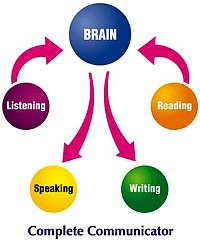 |
Learn English Locally, Apply It Worldwide! Enjoy Regular Practice |
Presenting Information
In fact this topic not only about presenting information, but we are actually dealing with presenting and focusing information. We spoke about cross-reference and omission last time. Well, there are many other strategies of omission in English, just as there are in any other language – nothing new here. However, this matter gets very complicated and it is rather for the advanced learners.
Therefore I suggest we skip the rest of the points on substitution and omissions for now and we discuss something more relevant to you, for example how we present and focus information. This is very useful both for writing and for speaking, at beginner’s and advanced levels alike. I remind the reader that this is communicative grammar, in the sense that it works from the angle of the person communicating a message. If the question is “What do you want to communicate?” this type of grammar will show you how to do it correctly. Traditional grammar will give you the pieces that go into a message and then ‘send you off’ to communicate it.
Because this chapter on presenting and focusing information is rather large, I shall start with an overview of the matter, after which we shall look into the details, in future issues. First, I shall send you back to the introductory lesson on using grammar for speaking/writing in Issue 024, where you can review or familiarise yourselves with the ingredients that go into a message:
a) the concepts;
b) the information;
c) the emotions; and
d) the meaning in connected discourse.
Now we are going to start considering how meanings can be presented and arranged for effective communication. If I told you that, for a message to be properly understood, 3 things need to happen:
i) The message needs to be cut up into individual pieces of information;
ii) The ideas have to be given the right emphasis;
iii) The ideas have to be put in the right order…
… You would say – “Yes, but I know this!” Ah, that’s the obvious logic, which I would risk say that all of us know, but it is applying this in practice that turns out to be a problem in most of the cases. Therefore, we shall take it easy and give you the tools to effectively apply these three principles in your speech and writing.
i) Pieces of information
These are the pieces we link together (by using the tools I gave you in issues 025 to 031 – please refer back to these sessions, if you need to review anything), i.e. the pieces of language which are separated from what goes before and from what follows and which do not contain any punctuation marks. In written English, we use the punctuation marks to make this separation, but not to split the unit/piece of information. In spoken English, a piece of information can be defined as a tone unit.
ii) The right focus and emphasis
The nucleus of a piece of information is the most important part of a tone unit, as it marks the focus of information, which is exactly where the speaker draws the hearer’s attention. We need to consider types of expressions, types of focus and types of information, before we decide the right emphasis we need to give a particular part of our message and then how we can do that correctly, either in writing, or in speech.
iii) Order and emphasis
Here we shall look into how English has various sentence processes,
which help to arrange the message for the right order and the right
emphasis. We shall see how the end position and the first position in a
sentence are given more importance and, according to how much importance
we want to give a piece of information, we place this either at the
beginning of our sentence or at the end.
If you get to understand
this overview of information in your message really well by next time,
the details will fall into place slightly easier, when it comes to it.
English Corner Weekly E-zine
Packed with knowledge, published on Tuesdays.
Get yours here!
Our Archives:
Our lessons in the names and sounds of letters, short & long vowel sounds, CVCs, CCVCs, CVCCs, sight words, vowel and consonant contrasts, etc.
Our lessons will help increase your vocabulary, word recognition, find meaning in context, skills for TOEFL tests and other games, for fun.
Here we shall build some lessons to help you improve your writing skills.
Lots of lessons: cause & effect, comparisons, linking signals, relative clauses, presenting information, expressing emotions and grammar games, of course. We had more lessons on: intensifying adverbs and phrasal verbs, expressing various concepts such as addition, exception, restriction and ambiguity. Lately we started some exercises: likes/dislikes, frequency adverbs (twice), verb tenses, etc.
Learn how to build a website, by using the SBI! system - start from the basics, developing a site concept and a niche, supply and demand, learn about profitability and monetization, payment processing, register domain, website structure and content as a pyramid. Also learn about the tools I'm using to build this website. We also covered how to build traffic, working with search engines, building a good system of inbound links, using social marketing and blogs with the SBI system, how to use Socialize It and Form Build It, how to publish an e-zine and how to build a social network in your niche.
We looked at a few games by now: Countable & uncountable nouns, Free Rice, Name That Thing, Spell It, Spelloween, the Phrasal Verbs Game, Preposition Desert, The Sentence Game, Word Confusion, Word Wangling, Buzzing Bees, and The Verb Viper Game.
Be prepared to play and learn more pretty soon.
